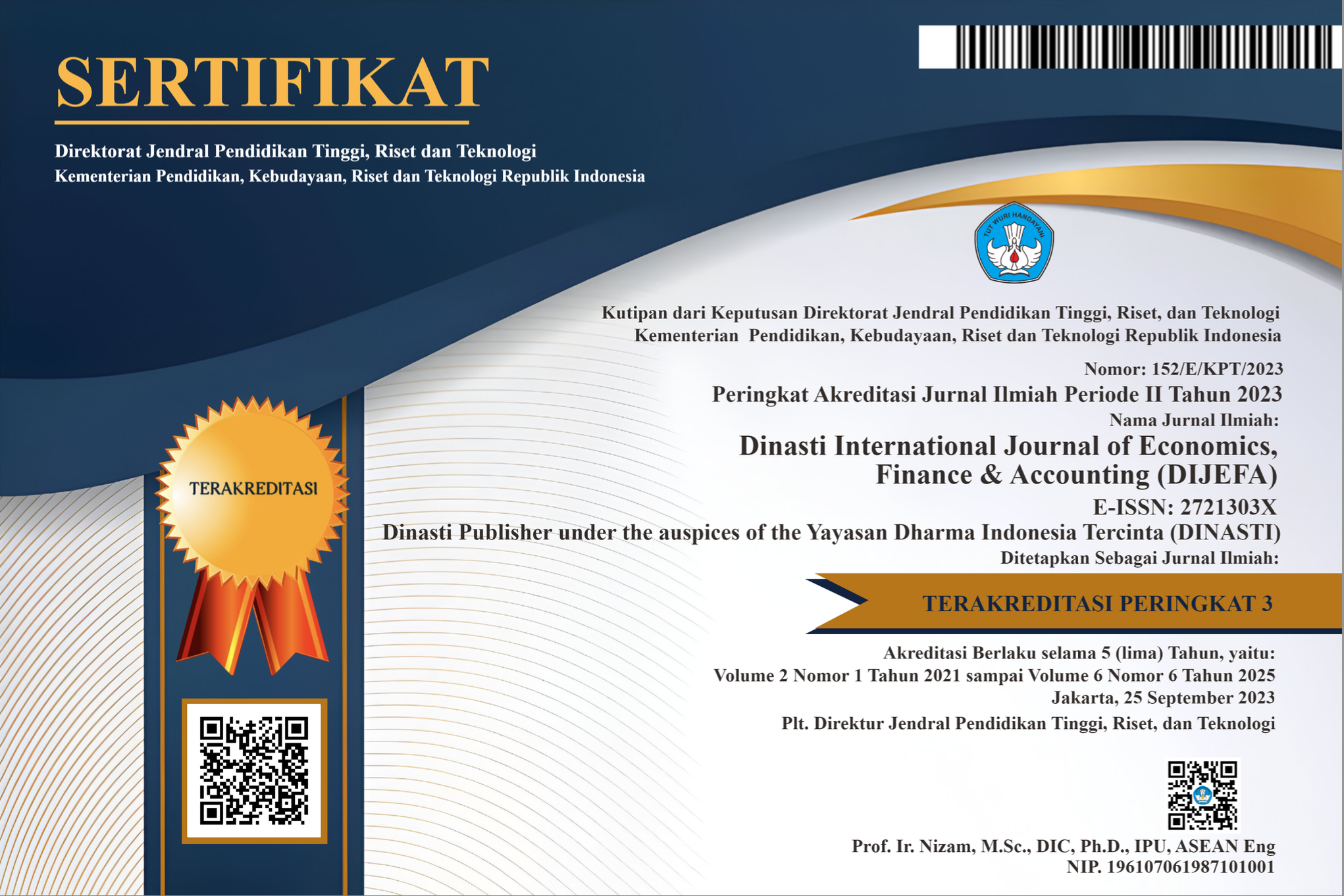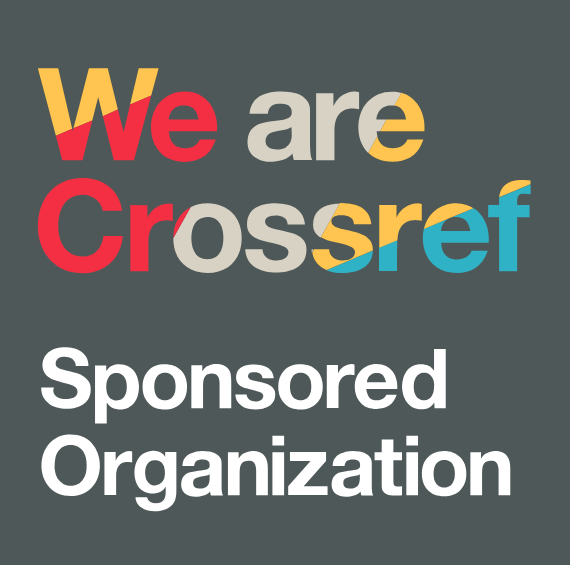Analyzing of Self Esteem, Self Efficacy, and Learning Organization on Employee Performance at PT Bank Republik Indonesia Branch Jemursari Surabaya
DOI:
https://doi.org/10.38035/dijefa.v3i3.1355Keywords:
vwwwwAbstract
Theory of Self-esteem and self-efficacy in Social Work (including historical reviews of social work alliances inconsistent with self-esteem and self-efficacy theory, emerging power perspectives, and narrative focus (Frankenberger et al. Families develop self-esteem and self-efficacy to pressures of military segregation) (Frankenberger et al., 2014).We see them together in one document. In this case, we want to study the flexibility of banking system factors that have never been done before. Private companies rely mainly on people, and human resources are undoubtedly distinctive. The quality of labor and returns will be the litmus test, that is, turnover high sales force due to low entry and exit b (Rana and Javid, 2019). In this article, we want to empirically examine the concept of flexibility associated with marketers in banking system. We are interested in seeking banking system flexibility for banking system professionals as the banking system factor is the focal point for private companies. It has been noted that the private sector is facing a crisis in the learning skills and competences of field staff - the key business team. They are distinguished by the criteria set for their employment. Anyone with basic training can become a banking system agent and start promoting and selling their own products. (Mahresh, 2014). Private companies need a reliable and strong team to keep improving the company's performance so that it remains competitive and evolving. To have a reliable banking system team, especially in private service companies, it takes rigorous banking system professionals who are smart about providing education to the public, especially potential customers, about the special benefits. Banking system professionals even face obstacles in their work. Results of interviews with researchers with people working in the field of banking system. The interviews revealed that their work was underestimated, leading to them being banned from friendship or family relationships early in their careers as marketers. While the banking system agent has basic needs, social and subjective needs in performing his job. Basic needs, social and subjective needs are factors related to job satisfaction; Stress, career advancement and work environment have emerged as factors for leaving the company.
References
Ambulkar, S., Blackhurst, J., & Grawe, S. (2015). Firm’s self-esteem and self-efficacy to supply chain disruptions: Scale development and empirical examination. Journal of Operations Management, 33–34, 111–122. https://doi.org/10.1016/j.jom.2014.11.002
Barzilay, R., Moore, T. M., Greenberg, D. M., DiDomenico, G. E., Brown, L. A., White, L. K., Gur, R. C., & Gur, R. E. (2020). Self-esteem and self-efficacy, COVID-19-related stress, anxiety and depression during the pandemic in a large population enriched for healthcare providers. Translational Psychiatry. https://doi.org/10.1038/s41398-020-00982-4
Bernier, Q., & Meinzen-Dick, R. S. (2014). Self-esteem and self-efficacy and social capital. 2020 Conference.
Bhamra, R., Dani, S., & Burnard, K. (2011). Self-esteem and self-efficacy: The concept, a literature review and future directions. International Journal of Production Research, 49(18), 5375–5393. https://doi.org/10.1080/00207543.2011.563826
Boell, S. K., & Cecez-Kecmanovic, D. (2015). What is “information” beyond a definition? 2015 International Conference on Information Systems: Exploring the Information Frontier, ICIS 2015.
Bouckenooghe, D., M. Schwarz, G., & Minbashian, A. (2015). Herscovitch and Meyer’s Three-Component model of commitment to change: Meta-analytic findings. European Journal of Work and Organizational Psychology, 24(4), 578–595. https://doi.org/10.1080/1359432X.2014.963059
Cheema-Fox, A., LaPerla, B. R., Serafeim, G., & Wang, H. (2020). Corporate Self-esteem and self-efficacy and Response During COVID-19. SSRN Electronic Journal. https://doi.org/10.2139/ssrn.3578167
Connor, K. M., & Davidson, J. R. T. (2003). Development of a new Self-esteem and self-efficacy scale: The Connor-Davidson Self-esteem and self-efficacy scale (CD-RISC). Depression and Anxiety. https://doi.org/10.1002/da.10113
Crossan, M. M., & Apaydin, M. (2010). A multi-dimensional framework of organizational innovation: A systematic review of the literature. Journal of Management Studies, 47(6), 1154–1191. https://doi.org/10.1111/j.1467-6486.2009.00880.x
Fink, A. (2020). Conducting Research Literature Reviews: From Paper to the Internet (Issue 2005). Sage Publications.
Frankenberger, T. R., Constas, M. a., Nelson, S., & Starr, L. (2014). Current approaches to self-esteem and self-efficacy programming among nongovernmental organizations. 2020 Conference.
Greene, R. R., Galambos, C., & Lee, Y. (2004). Journal of Human Behavior in the Social Environment Self-esteem and self-efficacy Theory. Journal of Human Behavior in the Social Environment, 8(4), 75–91. https://doi.org/10.1300/J137v08n04
Jaunatre, R., Buisson, E., Muller, I., Morlon, H., Mesléard, F., & Dutoit, T. (2013a). New synthetic indicators to assess community self-esteem and self-efficacy and restoration success. Ecological Indicators. https://doi.org/10.1016/j.ecolind.2013.01.023
Jaunatre, R., Buisson, E., Muller, I., Morlon, H., Mesléard, F., & Dutoit, T. (2013b). New synthetic indicators to assess community self-esteem and self-efficacy and restoration success. Ecological Indicators, 29(2013), 468–477. https://doi.org/10.1016/j.ecolind.2013.01.023
Kearnes, M. (2008). Risk society: Towards a new modernity by Ulrich Beck. Geography, 93(2), 122–123. https://doi.org/10.1080/00167487.2008.12094231
Linnenluecke, M. K. (2017). Self-esteem and self-efficacy in Business and Management Research: A Review of Influential Publications and a Research Pekerja banking systemda. International Journal of Management Reviews. https://doi.org/10.1111/ijmr.12076
Mehrishi, P. (2014). Learning and Competency Development of Insurance Advisors Through Practice Development. Journal of the Insurance Institute of India, 2(1), 93–97.
Okoli, C., & Schabram, K. (2010). Working Papers on Information Systems A Guide to Conducting a Systematic Literature Review of Information Systems Research. Working Papers on Information Systems, 10(2010). https://doi.org/10.2139/ssrn.1954824
Rahmadana, M. F., & Sagala, G. H. (2020). Economic self-esteem and self-efficacy dataset in facing physical distancing during COVID-19 global pandemic. Data in Brief. https://doi.org/10.1016/j.dib.2020.106069
Rana, F. A., & Javed, U. (2019). Psychosocial job characteristics, employee well-being, and quit intentions in Pakistan’s insurance sector. Global Business and Organizational Excellence. https://doi.org/10.1002/joe.21933
Rousseau, D. M., Manning, J., & Denyer, D. (2008). 11 Evidence in Management and Organizational Science: Assembling the Field’s Full Weight of Scientific Knowledge Through Syntheses. The Academy of Management Annals, 2(1), 475–515. https://doi.org/10.1080/19416520802211651
Suhandiah, S., Ekowati, D., Suhariadi, F., & Yulianti, P. (2020). Role and Measurement of Employee Self-esteem and self-efficacy in the Organisation : A Systematic Review on the Empirical Studies. 13(11).
Tranfield, D., Denyer, D., & Smart, P. (2003). Towards a Methodology for Developing Evidence-Informed Management Knowledge by Means of Systematic Review. In British Journal of Management. https://doi.org/10.1111/1467-8551.00375
VanBreda, A. D. (2001). Self-esteem and self-efficacy Theory : A Literature Review by. October, October, 1–140.
Varbanova, L. (2015). UNESCO Chair in Cultural Policy and Management The Impact of Corporate Social Responsibility on Sustainable Cultural Communities. September, 1–364.
Wagnild, G. M., & Young, H. M. (1993). Development and psychometric evaluation of the Self-esteem and self-efficacy Scale. Journal of Nursing Measurement.
Xu, Q., Member, S., Zhang, N., Kang, C., & Member, S. (2016). for Multi-Area Spinning Reserve Trading Considering Wind Power Uncertainty. 31(2), 1084–1095.
Zhang, Q., Zhou, L., & Xia, J. (2020). Impact of COVID-19 on emotional self-esteem and self-efficacy and learning management of middle school students. Medical Science Monitor. https://doi.org/10.12659/MSM.924994
Downloads
Published
How to Cite
Issue
Section
License
Authors who publish their manuscripts in this journal agree to the following conditions:
- The copyright on each article belongs to the author(s).
- The author acknowledges that the Dinasti International Journal of Economics, Finance & Accounting (DIJEFA) has the right to be the first to publish with a Creative Commons Attribution 4.0 International license (Attribution 4.0 International (CC BY 4.0).
- Authors can submit articles separately, arrange for the non-exclusive distribution of manuscripts that have been published in this journal into other versions (e.g., sent to the author's institutional repository, publication into books, etc.), by acknowledging that the manuscript has been published for the first time in the Dinasti International Journal of Economics, Finance & Accounting (DIJEFA).


























































